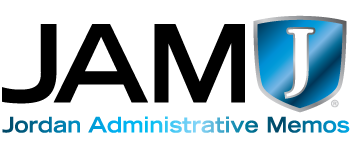Reading Recommendation Data was shared with Principals on Tuesday, 2/8/22. As an assistance and reminder to you and your teams, we wish to provide some context for this data that should help you and your teams guide decision making, as well as resolve any questions that might come up from counseling staff, parents, or students.
- Sharing Permissions:
This data has been shared as a "VIEW ONLY" file. Once this data has been shared with you, we recommend making a copy for your own use so you can review and/or manipulate the layout as you see fit.
T&L occasionally gets requests from Counseling Teams to share the files directly with them, which we cannot do for student data privacy reasons. We will direct those teams to contact you for access. Once the file is under your supervision, you may share it with team members and educators as you see fit.
- What Has Been Shared:
You will receive access to several separate documents:
-Reading Recommendations for NEXT YEAR'S incoming 7th, 8th, and 9th Graders.|
-Current Reading Data for students attending your school.
-The Rubric used to assess student literacy and recommendations. - Purpose:
The purpose of providing this data is to help schools anticipate needs for students who may have gaps in their literacy skills, and who might benefit from supplemental learning in a reading course. The goal of a reading course is to provide the necessary literacy skills to engage with and thrive across the curriculum.
The data we have provided is NOT a reading placement--it is a recommendation. This data should be used to help inform discussions between Administrators, Educators, Parents, and Students to make the best decision for students. When questions arise about a student's literacy readiness, we leave it to schools to collaborate with parents and students to make an informed decision in the best interest of the student. We provide this information to support that collaborative effort.
While some students may be far above or below proficiency, and their need for support is readily apparent, other students may be in a gray area on the edge of proficiency--both above and below. Please work flexibly with families as they seek to understand the precise needs of their students.
You may use the rubric to assist you in understanding how close or far a student is to proficiency.
- The Rubric:
Collaborating with the Elementary ELA Consultants, this rubric has been developed and refined to identify where students sit in their literacy readiness to assist in the transition from Elementary to Middle Schools. The following data points have been collected:
--RISE Score:
A student's most recent Utah Standardized Assessment in ELA.
--Lexile Level:
A Lexile Level is a standard data point that is used nationwide to quickly assess a student's ability to engage with and comprehend a complex text. Specific Grade Level Curricula correspond with Lexile measure bands. At a minimum, it is expected that students be able to demonstrate proficiency at the Lexile levels commonly associated with their grade level in order to succeed across the curriculum.
--Acadience MOY Composite:
As a state, the USBE has provided Acadience to all K-6 Classrooms to assist in the monitoring of reading proficiency. In our district, we participate in using this assessment, and use it to monitor student growth and to provide targeted RTI. As a 6th grade, all students have a middle of year assessment that is delivered between December-January.
--Most Recent ELA Grade:
For grades above 6th, we take into account, their current performance in ELA.
- Administrator Judgement and Flexibility:
Again, this information is meant to serve as a guidepost, not as a fixed placement. There are a variety of factors that can influence any of the rubric criteria, and we ask that you and your teams use this information prudently and wisely as you consider what is best for students, and to use it as part of the discussions that may occur as questions arise from students and parents on a case by case basis. We accord you and your teams the professional trust to delegate and use this data as you deem fit to serve your communities.
Thank you again for your collaboration and continued leadership through thick and thin!
